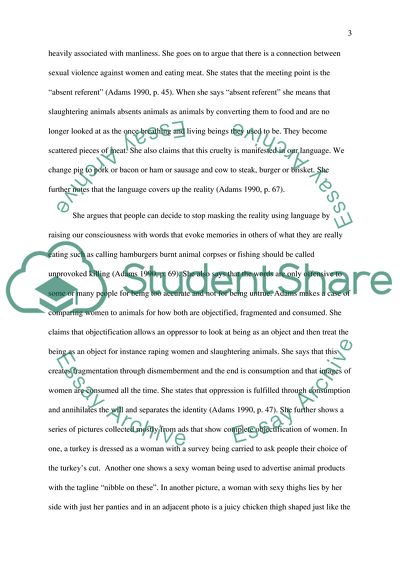Cite this document
(Sociology and Animal Treatment Essay Example | Topics and Well Written Essays - 2500 words, n.d.)
Sociology and Animal Treatment Essay Example | Topics and Well Written Essays - 2500 words. https://studentshare.org/sociology/1826724-to-what-extent-do-you-consider-that-sociological-concepts-are-useful-in-theorising-or-understanding-relationships-between-human-and-non-human-animals
Sociology and Animal Treatment Essay Example | Topics and Well Written Essays - 2500 words. https://studentshare.org/sociology/1826724-to-what-extent-do-you-consider-that-sociological-concepts-are-useful-in-theorising-or-understanding-relationships-between-human-and-non-human-animals
(Sociology and Animal Treatment Essay Example | Topics and Well Written Essays - 2500 Words)
Sociology and Animal Treatment Essay Example | Topics and Well Written Essays - 2500 Words. https://studentshare.org/sociology/1826724-to-what-extent-do-you-consider-that-sociological-concepts-are-useful-in-theorising-or-understanding-relationships-between-human-and-non-human-animals.
Sociology and Animal Treatment Essay Example | Topics and Well Written Essays - 2500 Words. https://studentshare.org/sociology/1826724-to-what-extent-do-you-consider-that-sociological-concepts-are-useful-in-theorising-or-understanding-relationships-between-human-and-non-human-animals.
“Sociology and Animal Treatment Essay Example | Topics and Well Written Essays - 2500 Words”. https://studentshare.org/sociology/1826724-to-what-extent-do-you-consider-that-sociological-concepts-are-useful-in-theorising-or-understanding-relationships-between-human-and-non-human-animals.


